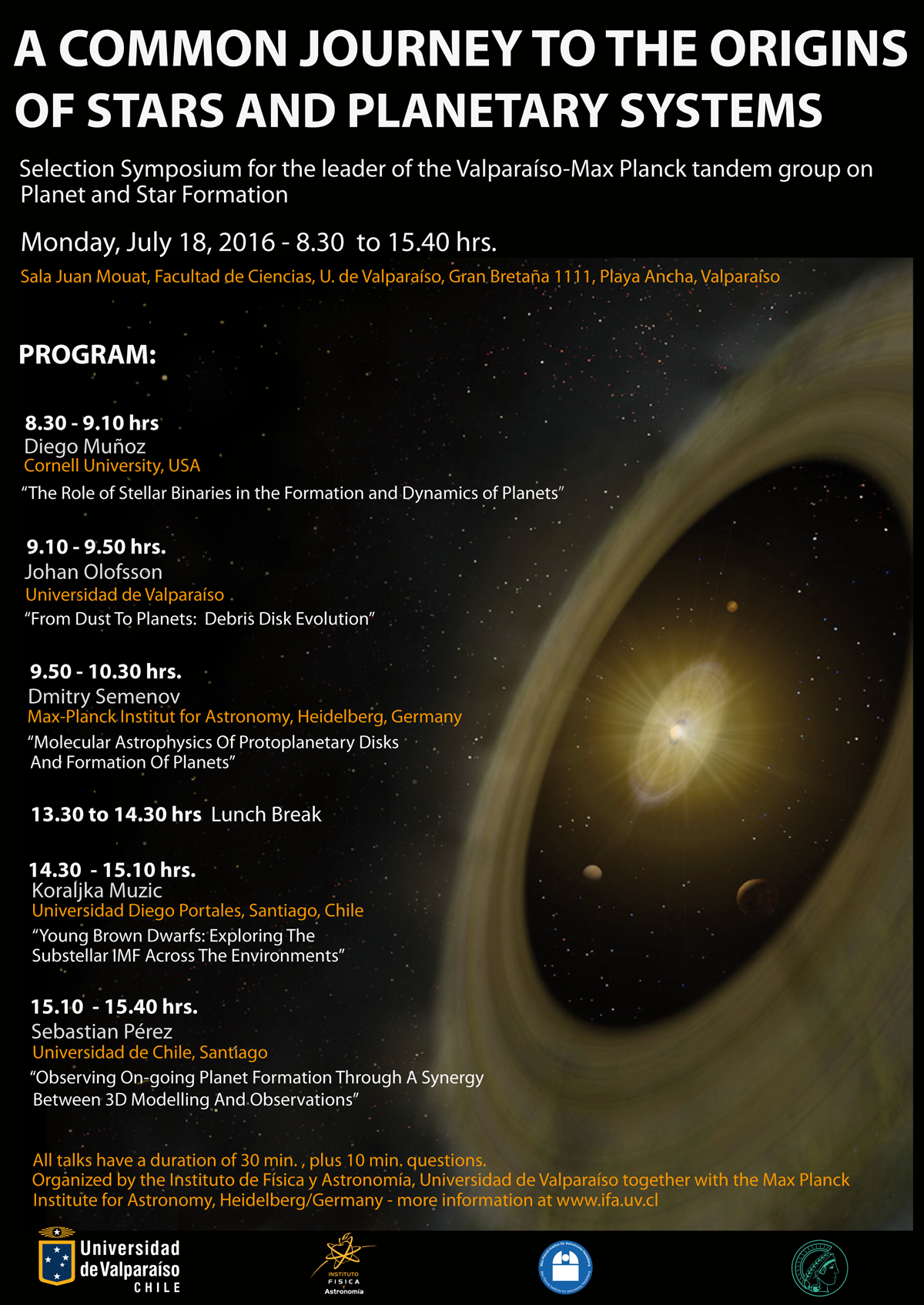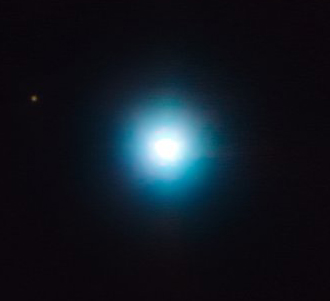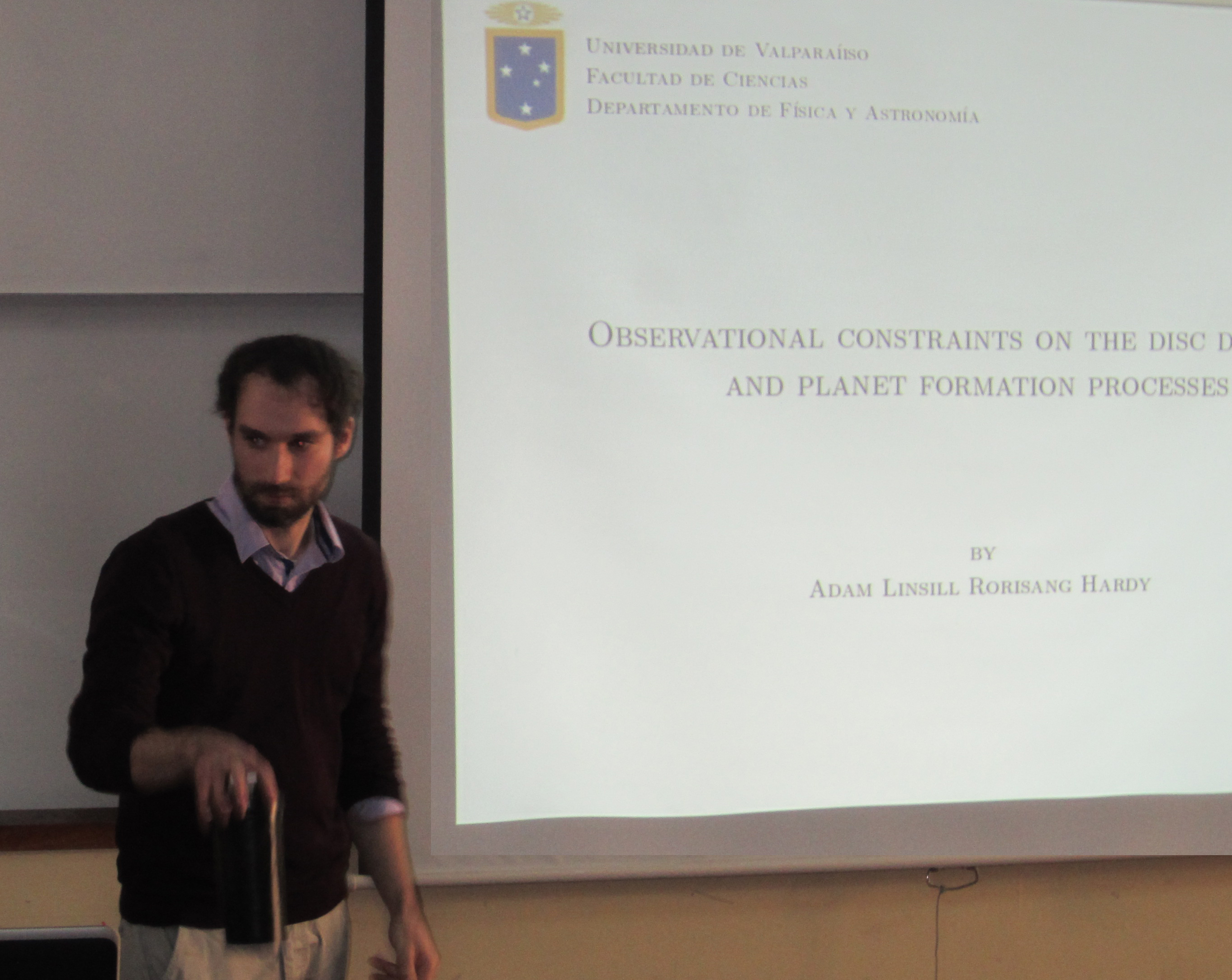July 13, 2016. IFA News
 An international work group, amongst which are three IFA collaborators, published a few hours ago an article which is an ESO Press Release: ESO’s HAWK-I infrared instrument on the Very Large Telescope (VLT) in Chile has been used to peer deeper into the heart of Orion Nebula than ever before. The spectacular picture reveals about ten times as many brown dwarfs and isolated planetary-mass objects than were previously known. This discovery poses challenges for the widely accepted scenario for Orion’s star formation history. The Principal investigator of the team iHolger Drass (Astronomy Institute, Ruhr University of Bochum, Germany; Pontificia Universidad Católica de Chile, Santiago, Chile), and co-aouthors Amelia Bayo, Nicolás Godoy and Nikolaus Vogt, these last three from IFA, form part of that international team. Amelia Bayo explains why this is important: "Understanding how many low-mass objects are found in the Orion Nebula is very important to constrain current theories of star formation. We now realise that the way these very low-mass objects form depends on their environment." Image: A deep infrared view of the Orion Nebula from HAWK-I, credits, ESO.
An international work group, amongst which are three IFA collaborators, published a few hours ago an article which is an ESO Press Release: ESO’s HAWK-I infrared instrument on the Very Large Telescope (VLT) in Chile has been used to peer deeper into the heart of Orion Nebula than ever before. The spectacular picture reveals about ten times as many brown dwarfs and isolated planetary-mass objects than were previously known. This discovery poses challenges for the widely accepted scenario for Orion’s star formation history. The Principal investigator of the team iHolger Drass (Astronomy Institute, Ruhr University of Bochum, Germany; Pontificia Universidad Católica de Chile, Santiago, Chile), and co-aouthors Amelia Bayo, Nicolás Godoy and Nikolaus Vogt, these last three from IFA, form part of that international team. Amelia Bayo explains why this is important: "Understanding how many low-mass objects are found in the Orion Nebula is very important to constrain current theories of star formation. We now realise that the way these very low-mass objects form depends on their environment." Image: A deep infrared view of the Orion Nebula from HAWK-I, credits, ESO.
Associated links: See the complete ESO Press Release, "Deepest Ever Look into Orion" - Scientific Article
 Julio 11, 2016. Noticia IFA
Julio 11, 2016. Noticia IFA
El Instituto de Física y Astronomía, IFA, realizará un Simposio titulado "A Common Journey to the Origins of Stars and Planetary Systems", el dia lunes 18 de Julio próximo en la Sala Juan Mouat de la Facultad de Ciencias entre las 8.30 y 15.40 hrs, con la finalidad de seleccionar a la persona que liderará el "Grupo Max Planck tandem para la Formación de Planetas y Estrellas" de la U. de Valparaíso y el Max Planck Institute de Heidelberg, Alemania. Los candidatos a esta posición son los siguientes: Diego Muñoz (Cornell University, USA), Johan Olofsson (Universidad de Valparaiso), Dmitry Semenov (Max-Planck Institute for Astronomy, Alemania), Koraljka Muzic (Universidad Diego Portales) y Sebastián Pérez (Universidad de Chile), quienes presentarán charlas de 30 minutos cada uno, con 10 minutos para preguntas, en torno a la temática del grupo tandem. El evento, organizado por IFA y el Max-Planck Institute, es de asistencia abierta para todo interesado.
Enlaces asociados: Symposium A Common Journey to the Origins of Stars and Planetary Systems - IFA firma acuerdo con el Instituto Max Planck de Alemania (Octubre 2015)
June 15, 2016. IFA News
 Astronomers search for planets around other stars using a variety of methods. One of them, very succesfull, is specially effective for detecting planets in wide orbits around young stars, because the light reflected off the planet is not overwhelmed by the light of its host star, and so its easier to detect. Dr. Nikolaus Vogt, from IFA, is part of the research team that took the "picture of the week" for ESO (potw1624).
Astronomers search for planets around other stars using a variety of methods. One of them, very succesfull, is specially effective for detecting planets in wide orbits around young stars, because the light reflected off the planet is not overwhelmed by the light of its host star, and so its easier to detect. Dr. Nikolaus Vogt, from IFA, is part of the research team that took the "picture of the week" for ESO (potw1624).
The image shows us a T-Tauri star named CVS030, distant 1200 LY from the Earth, in the 25 Orionis Group (a little to the northwest of well know Orion´s Belt). In 2012, astronomers discovered an exoplanet (CVSO 30b) orbiting around that star, by using the photometry method of light transit (the light from the star decreases slightly every time the planet passes in front of it). And, when astronomers went back to examine the star again, this time using varied telescopes, combining observations obtained from the VLT in Chile, the W.M.Keck in Hawaii and the Calar Alto Observatory in Spain, they found what would be a second planet. To produce the image they exploited astrometry information provided by NACO and SINFONI instruments from VLT. This new exoplanet, called CVSO 30c would be the small dot that can be seen in the upper left corner of the image (the bright object is the host star). Whereas the previous planet detected orbits very close to the star in less than 11 hours at a distance of 0.008 AU, CVSO 3c orbits at a distance of 600 AU, taking 27.000 years to complete a single orbit. As reference, Mercury orbits at a distance of 0.39 AU from our Sun, while Neptune does so at a little over 30 AU. If CVS0 30c is confirmed to orbit CVS030, it would be the first stellar system that has a close planet detected by the transit method as well as a distant planet detected by direct imaging. Astronomers still investigate how such an exotic system formed in such a short time period, as the star is only 2.5 million years old. Its possible that both planets had some interaction in the past, dispersing them and placing them in their current orbits. Image: Star CVS0 30 in the ESO Picture of the Week, credits, ESO/SChmidt et al.
Associated link: Scientífic paper, Schmidt et al.
 June 15, 2016. IFA News
June 15, 2016. IFA News
On tuesday June 14, 2016, at 1 PM, our PhD student Adam Hardy Linsill Rorisang defended his thesis for opting to a PhG degree in Astrophysics in Sala Juan Mouat of the Facultad de Ciencias. Adam becomes, in this way, our first graduate from the Astrophysics PhD Program of the Instituto de Fisica y Astronomía, opened in year 2013. The student presented his thesis "Observational Constraints on the Disc Dispersal and Planet Formation Processes" to a comittee that included two external evaluators and another one from the Pontificia Universidad Católica de Chile, all of which unanimously determined to award him with a 7.0, the highest grade possible, for his work. Later, professors and students alike shared a moment of happy celebration together with Adam. Image: Adam Hardy begins his thesis defense in Sala Juan Mouat.
 June 13, 2016. IFA News.
June 13, 2016. IFA News.
For two months the Itinerant Exhibition "La Vía Láctea: Nuestro Hogar en el Universo" will be open for viewing by the general public at the Museo de Historia Natural de Valparaíso situated in Calle Condell 1546, in Valparaíso. This exhibition, an initiative of the "Nucleo Milenio para la Vía Láctea", is possible thanks to a project belonging to Dr. Nikolaus Vogt, from IFA, and has been displayed regularly between years 2012 and 2016 in more than 60 Schools and Cultural Centers of the V Region, reaching more remote places like Robinson Crusoe Island. The exhibition may be visited in the Museo de Historia Natural until July 31, between 10 AM and 6 PM, from Tuesday to Saturday, and between 10 AM and 2 PM on Sundays and holidays.
You may reserve this beautiful and colourful collection of Astronomy Images (14 self-sustainable panels of 80x180 cm) for one, or up to two, weeks by filling in the following form. Don´t forget to check out the 2016 Calendar to make sure the Exhibition is available for your date. Image: One of the 14 panels, Emission Nebulae from our Galaxy, the Milky Way.
Form for reserving the Exhibition
You may check out some more images of the Itinerant Exhibition: Exhibition Presentation - Milky Way - Globular Clusters





